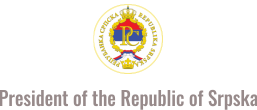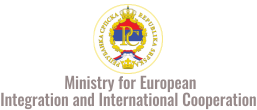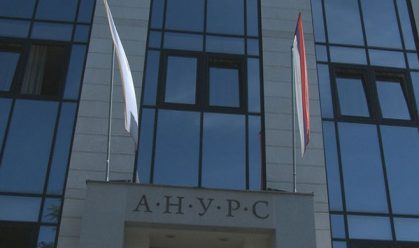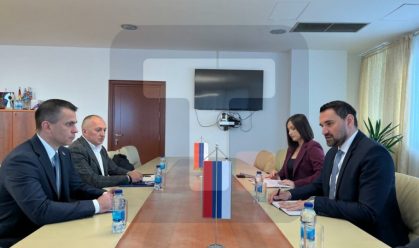In the previous three years, the Directorate for Cooperation with the Diaspora and Serbs in the Region opened 34 supplementary Serbian language schools around the world, in the Canary Islands, Malta, Spain, Portugal, the Netherlands and Russia. These schools are part of the work system of Serbian Ministry of Education.
Arnaud Gouillon, Director of the Directorate for Cooperation with the Diaspora and Serbs in the Region says:
– If you live abroad since birth, it is not easy to fully master the mother tongue without school, even when Serbian is spoken in the family. Language is at the core of the culture and identity of every nation. By learning Serbian, children preserve their identity and roots. In supplementary schools, they learn not only grammar and Cyrillic, but also the history and culture of the Serbs. We want generations of Serbian children born abroad not to lose that thread. A single mother told me that, although she always spoke to her child in Serbian, the child understood, but answered in English. Therefore, one of the priorities of the Directorate I lead is to establish supplementary schools of the Serbian language, where children, in addition to learning, have the opportunity to speak in their mother tongue with their peers.
Exactly one week ago, he symbolically opened 10 supplementary Serbian language schools in one day. He explains that Serbs in Austria constitute one of the most numerous minority communities and that there are our students all over the country. Up until now, Serbian schools were founded mostly in Vienna, which has the largest concentration of Serbs, and now cities such as Bregenz, Feldkirch, Kufstein and Klagenfurt have classrooms for learning the Cyrillic alphabet.
– With those newly opened, there are 32 Prosvjeta association’s Serbian language schools in Austria today, attended by about 1,000 students. In the past three years, the Directorate financed the work and opening of schools with 7,750,000 dinars, donated 10,000 textbooks and reading materials, as well as teaching materials. Prosvjeta’s Serbian language schools recently celebrated a decade of work, and during that period more than 7,000 students passed through these schools – explains Gouillon.
Gouillon shows by his own example what it means to preserve tradition. And he sums up in one sentence what a Serbian language school abroad means: if at least one child in the diaspora knows Serbian, it means that one Serbian home speaks Serbian and that knowledge of the mother tongue is passed down from generation to generation.
It is interesting, Gouillon continues, that Serbian diaspora in America is one of the oldest in the world, and that until now there has not been a single supplementary school in the system of our Ministry of Education. That is why there is dedicated work on opening the schools all over the USA, and a Serbian language school attended by 150 students has just started in Milwaukee.
What he has come to realize based on numerous encounters in the diaspora is that Serbs are very proud of their origin, identity and history, and that there is a trend of return to their motherland.
According to a UN Development Programme research, about 90,000 people returned in the first year of Covid-19, the first time there were more returnees than leavers. Gouillon believes that reason for this is that Serbia is developing and economic gap separating it from Western countries is shrinking, and in addition, it has preserved traditional values. For families, life is safer in Serbia, he adds, than in the suburbs of large cities in Western Europe, where most of our people live.
‘That is why these schools are also important. If we manage to preserve the Serbian language and identity among the second and third generations, then there is potential for return’, says Arnaud Gouillon.
Folklore is more than dance
Drawing a line under the last year of work, Arnaud Gouillon points out that this year, thanks to President Aleksandar Vučić, the budget for helping Serbs in the region has tripled, to 1.5 million euros:
– We financed 308 projects of Serbian organizations around the world that work to preserve identity, culture, language and cooperation with the motherland. In the previous three years, we helped 106 cultural and artistic societies throughout Europe, their events and purchase of folk costumes, because folklore is more than dance, it is the guardian of a nation’s identity. This year we were the first to have summer camps for children from the region. In Belgrade, we hosted more than 800 children from BiH, Croatia, Romania and North Macedonia, who visited historical and cultural sights. For many, it was the first time to visit the capital.
We are continuing the campaign launched two years ago to protect property rights of Serbs expelled from the territory of the Federation. Together with other institutions, we launched legal aid offices in the Republic of Srpska and Serbia. The result of this campaign is 9,000 initiated cases for the exercise of property rights, or an area of about 57,000 hectares, which will remain in Serbian hands.
We regularly welcome representatives of Serbian associations to meetings in order to learn about their problems, and we have a larger number of associations with which we cooperate on projects to preserve Serbian identity in the diaspora. We created an updated database with more than 1,400 associations, we simplified and digitized registration, procedures, participation in competitions. We are working on creating a database that will include Serbian Orthodox Church eparchies in the region and the diaspora.
Ministry of Education: Classes in 17 countries
In the 2022/23 school year, 7,957 students attended classes in Serbian abroad, most of them in Germany, Switzerland and Slovenia. According to the information of the Ministry of Education, supplementary Serbian language schools are organized in 17 countries: FR Germany, Switzerland, France, Italy, Slovenia, Malta, Greece, Great Britain, Kingdom of Norway, Kingdom of Denmark, Kingdom of Belgium, Kingdom of the Netherlands, Grand Duchy of Luxembourg, Republic of South Africa, Kingdom of Spain, Russian Federation and Australia.
There are several teaching models: within the system of the Ministry of Education, under the auspices of the eparchies of the Serbian Orthodox Church and Serbian associations in the diaspora, so the number of students, teachers and schools is actually higher than the official data.
The line Ministry says that interest in attending classes in Serbian is constantly growing among our people in the diaspora:
‘In order to understand how important it is to organize educational work in the Serbian language abroad for students of Serbian origin, we should remember the fact that there are about 5,100,000 displaced Serbian citizens in about 100 countries of the world, with over 1,137 clubs and associations on all five continents, with an extensive network of diplomatic and consular missions covering 178 countries on a residential and non-residential basis. The Serbian language and alphabet are the foundation of the national identity of the Serbs, that is why care is being taken of key needs of our people living in the diaspora and the region.’
These schools do not only mean learning the language and alphabet, the line Ministry reminds, but also developing children’s awareness of national and cultural identity, introducing them to the most valuable works of Serbian cultural heritage and encouraging maintenance of lasting ties with the homeland.
Source: Directorate for Cooperation with the Diaspora and Serbs in the Region – Politika
Photo: Deutsche Welle (DW)





